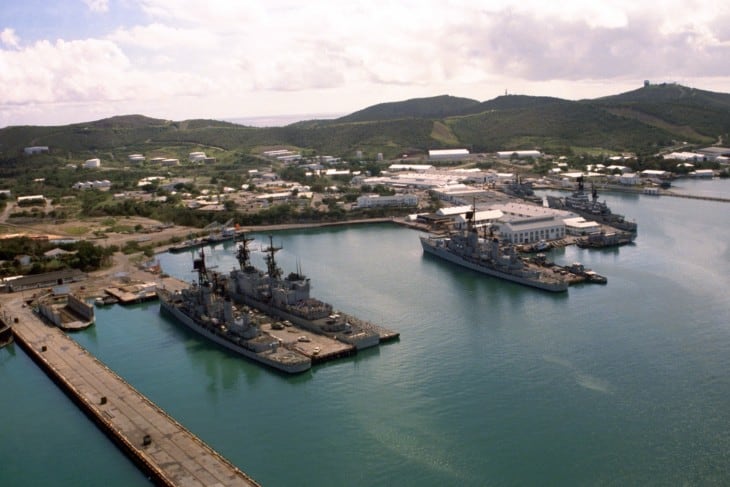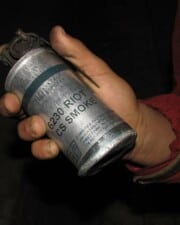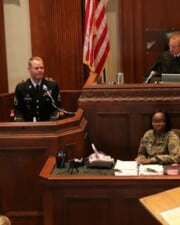Guantanamo Bay has a notorious reputation but is also home to the oldest US naval base. Thousands of people work and live in the bay throughout the year. As the base is home to many people, civilians may wonder whether they can visit Guantanamo Bay.
Table of Contents
Civilians may visit the Guantánamo Bay Naval Base if they have a sponsor who can provide temporary residence for the duration of their stay. The sponsor must submit a request for the visit and have it approved by the appropriate chain of command.
Can You Visit Guantanamo Bay as a Tourist?
Civilians cannot simply purchase a plane ticket and fly to Guantánamo Bay as a tourist. Visitors must be approved to visit Guantánamo Bay before making the trip. In most cases, visitors are sponsored by an active-duty service member or civilian contractor stationed or living on the naval base.
Close to 10,000 people live on the Guantánamo Bay Naval Base. About 40% of the population includes civilian contractors from Jamaica, the Philippines, and other countries. The remaining population consists of military personnel and their family members.

The naval base is separated from the detention center that people commonly refer to as Guantanamo Bay. The detention center is off-limits to most military personnel and not visible from any of the main areas of the naval base.
Service members and civilian contractors are assigned a sponsor. All requests for visitors are handled through the sponsor. Approved visitors receive an “Area Clearance.” Only about six flights a month travel to Guantanamo Bay. After arriving at the naval base, visitors must remain within approved areas. They cannot leave the base or explore the rest of Cuba.
Do Families Live on Guantánamo Bay?
The population of Guantanamo Bay includes many families, including families of military members, civilian contractors, and civilian-military employees.
The base does not have any non-government housing or temporary lodging. However, Guantanamo Bay has 756 family housing units. Military families with children have access to schooling, youth programs, and a large commissary.
The type of housing varies significantly across the base. Some of the older homes on Guantánamo Bay were built in the 1940s, while newer homes were built in the past few years. All housing includes modern appliances and other amenities.
Why Is Guantanamo Bay Called Gitmo?
In military code, Guantanamo Bay is abbreviated as GTMO. Gitmo is the pronunciation of the abbreviation. The word “Gitmo” is also typically used when talking about the detention center. The detention center was opened in January 2002, several months after the 9/11 terror attacks.

Is Guantanamo Bay Still Open?
The naval base and detention center are still open. US President Donald Trump signed an executive order in 2018 keeping the detention camp open. In February 2021, US President Joe Biden declared plans to shut down the detention center. However, it still houses about 39 detainees. There is no indication that the White House administration or US Navy plan on closing the naval base. It is the oldest US naval base.
In 1901, the US government passed the Platt Amendment. The amendment required Cuba to lease land to the US for coaling and naval stations. The purpose of the amendment was to ensure the independence of Cuba by maintaining a military presence in the area. The land was granted for a naval base at Guantánamo Bay in 1903.

Where Is Guantanamo Bay?
Guantanamo Bay is a bay in the Guantanamo Province of Cuba. The bay is near the southeastern end of the island nation and home to the largest harbor. It is surrounded by steep hills, which cuts it off from the surrounding terrain.
The Guantanamo Bay Naval Base covers about 45 square miles across the southern portion of the bay. There is no access to the naval base from within Cuba. The only entry point is the harbor and airfield, which are controlled by the US Navy.
Does Guantanamo Bay Have a McDonald’s?
Yes, the Guantanamo Bay Naval Base has a McDonald’s fast-food restaurant. It is the only McDonald’s in Cuba. The naval base provides access to a variety of dining establishments, including seven bars and nine restaurants. Residents can also enjoy many recreational activities, such as kayaking, golf, hiking, paintball, water skiing, surfing, and scuba diving.
Related Posts












